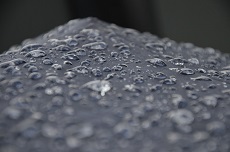
In the complex realm of access control systems, understanding the functionalities and applications of dry and wet contacts is crucial for ensuring effective security measures. These two types of electrical contacts serve as vital components in the mechanics of access control, playing a pivotal role in the operation of locks, alarms, and other integrated systems. While they may seem similar, there are distinct differences that could impact the reliability and efficiency of a security system. Below, we explore the nuances of each type to help you determine which is better suited to your access control needs.
Understanding Dry vs. Wet Contacts in Access Control Systems
Understanding the distinction between dry and wet contact is essential in access control systems. Dry contacts, lacking voltage or current, act as simple connection points to trigger external devices like locks or alarms. In contrast, wet contacts carry voltage or current, enabling direct powering of devices. Integrators must assess device requirements, component distance, and electrical isolation levels to determine the suitable contact type for optimal system performance, reliability, and ease of installation and maintenance. Thus, grasping the nuances of dry and wet contacts is crucial for effectively managing access control systems across various environments.
Advantages of Dry Contacts for Access Control Security
Dry contacts are integral to access control systems, offering significant advantages that bolster security and flexibility. Their key benefit lies in providing a safe and dependable signaling mechanism without external power sources, rendering them cost-effective for integration with various security components like alarms and cameras. Furthermore, their compatibility with diverse access control devices and protocols facilitates seamless integration with existing security infrastructure, enabling easy customization and expansion without complex installations. Additionally, dry contacts ensure stability and durability, guaranteeing consistent and reliable performance over time. In essence, their cost-effectiveness, compatibility, and reliability empower businesses to enhance security measures and streamline access control systems for optimal protection and efficiency.
Benefits of Wet Contacts for Enhanced Access Control Functionality
Wet contacts offer distinct advantages, notably by directly providing power to devices, thereby simplifying cabling needs and eliminating the necessity for a separate power supply, which is especially beneficial for smaller systems or those prioritizing installation simplicity. Their ability to swiftly transfer power over the control circuit is invaluable for emergency systems, enhancing response times in critical situations. Additionally, wet contacts are ideal for long-distance control applications, as they can transmit power efficiently over considerable distances without significant losses, making them particularly useful in large facilities. Furthermore, their inclusion can streamline system integration processes, reducing the need for extensive rewiring and lowering labor and material costs, especially in retrofitting older buildings with new security technology.
Making the Right Choice for Your Access Control Needs

Deciding between dry and wet contacts for an access control system requires careful consideration due to its significant implications for efficiency and reliability. Factors such as environmental conditions, power availability, and device types must be evaluated, with dry contacts often preferred for safety-critical environments. Long-term needs, including potential expansions or upgrades, should be projected, with dry contacts offering more flexibility. Cost implications, including additional components for dry contacts and maintenance costs for wet contacts, must also be weighed. Consulting access control specialists is advisable to ensure a well-informed decision aligned with operational outcomes and budget constraints.
Best Practices for Maintenance of Dry and Wet Contact Systems
Maintaining both dry and wet contacts in an access control system is essential for longevity and reliability. Regular inspections are crucial to ensure proper function. For dry contacts, watch for wear or corrosion that could impede performance. Wet contacts require checks on insulation and connections to prevent short circuits and leaks, ensuring correct power levels to avoid damage. Environmental factors like dust and humidity can degrade components, so protective measures such as sealed enclosures and air conditioning are vital. Implementing scheduled testing can preemptively identify issues, ensuring consistent operation and minimizing downtime.
Altogether, the decision between dry and wet contacts in access control systems hinges on specific environmental needs, safety requirements, and functional demands of a given facility. Understanding their different advantages and implementations can lead to a more tailored, effective, and secure access control solution. With the information presented, facility managers and security professionals can make educated decisions ensuring optimal system performance and integrity.






